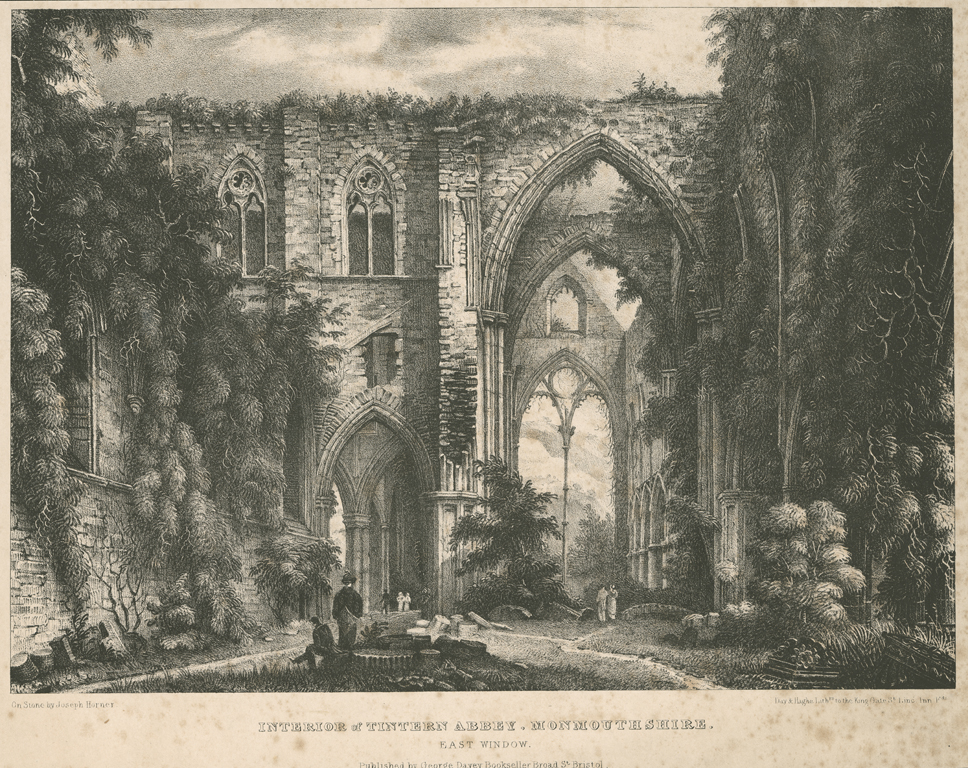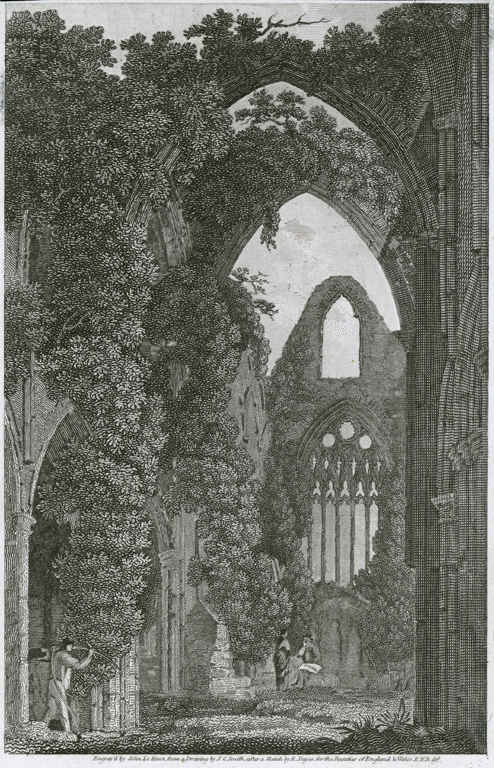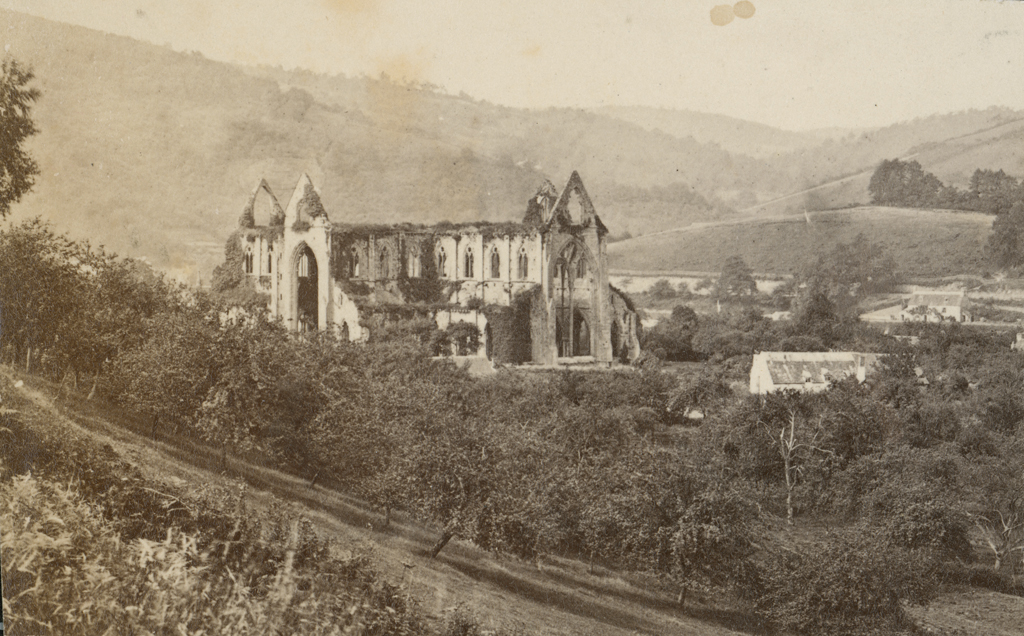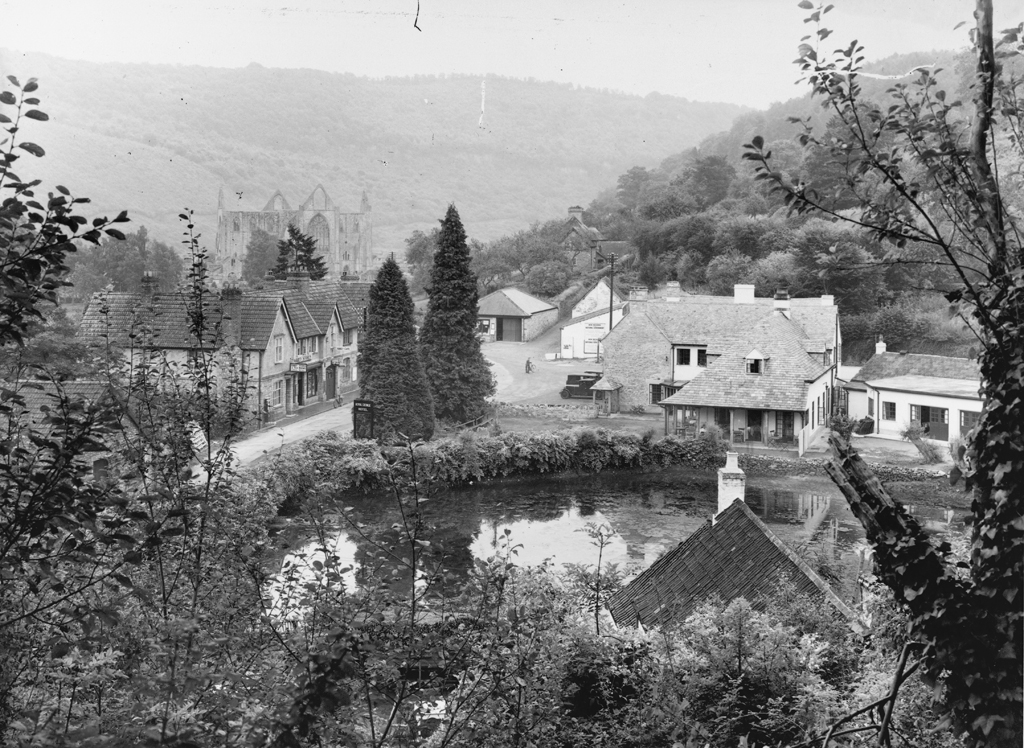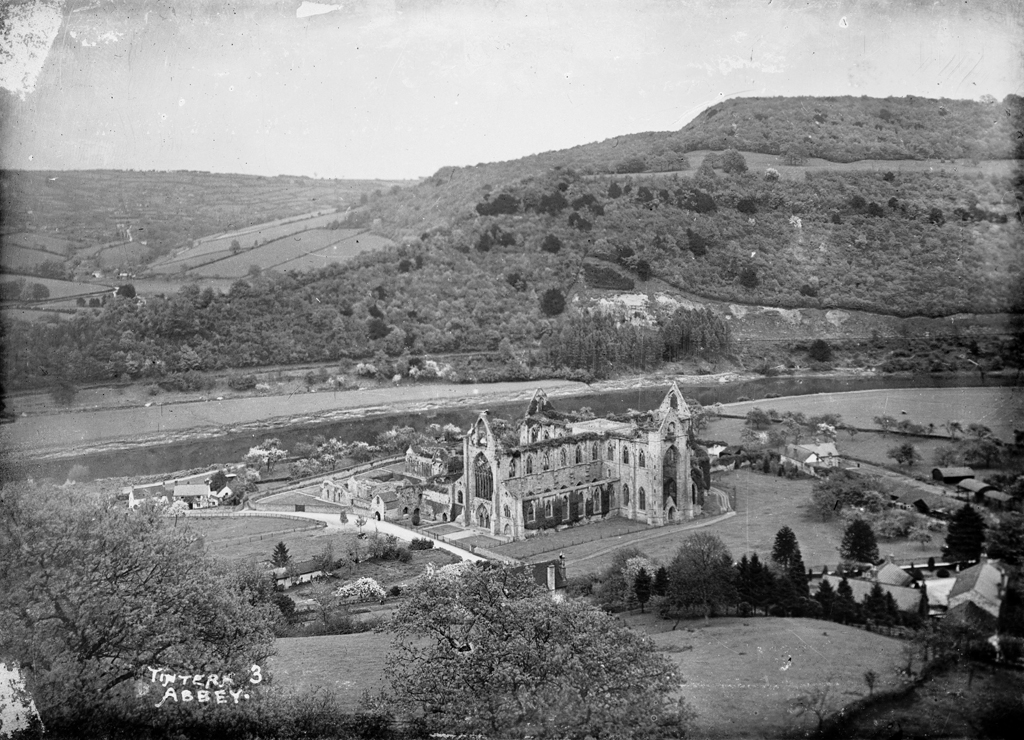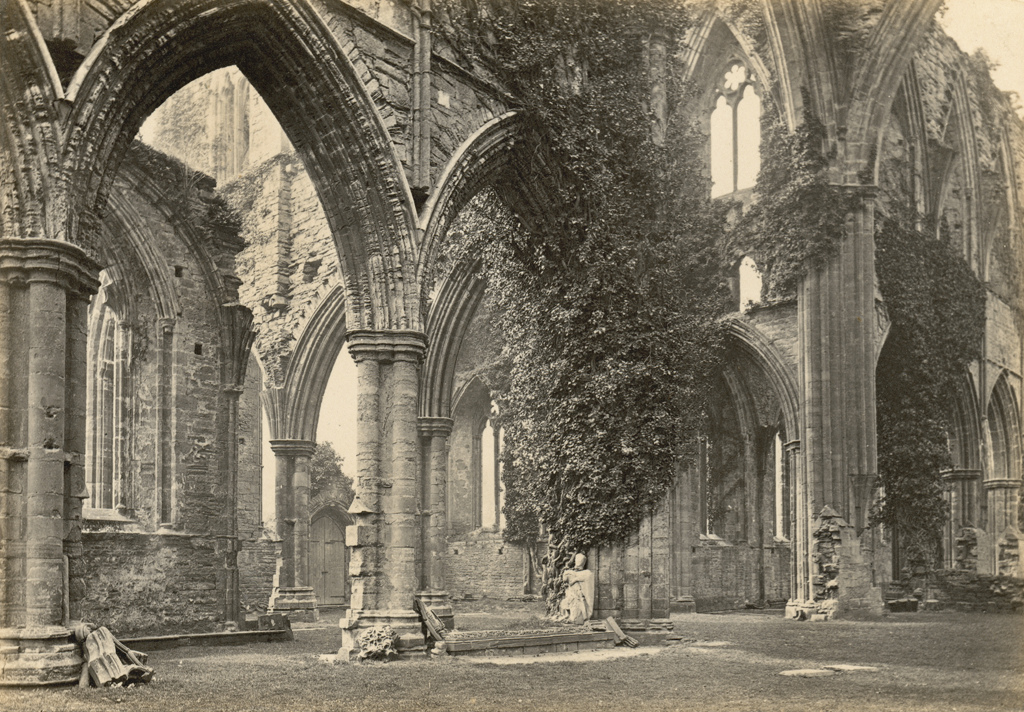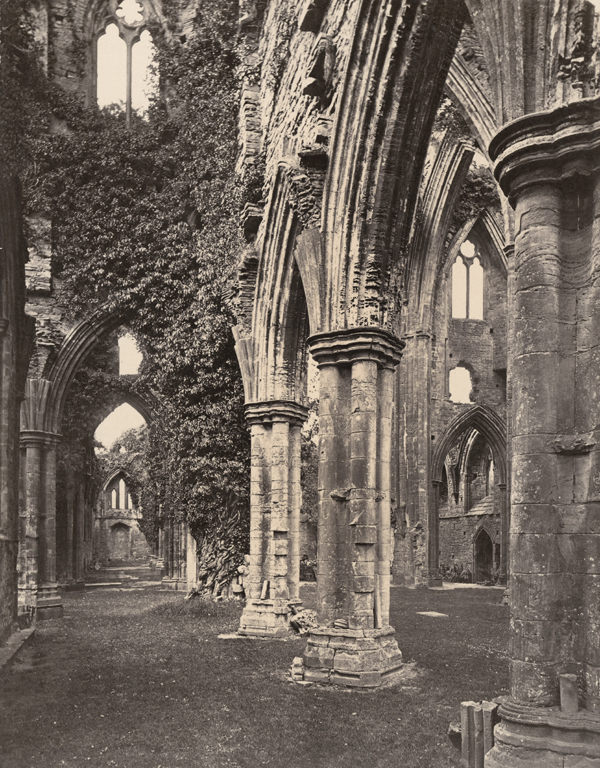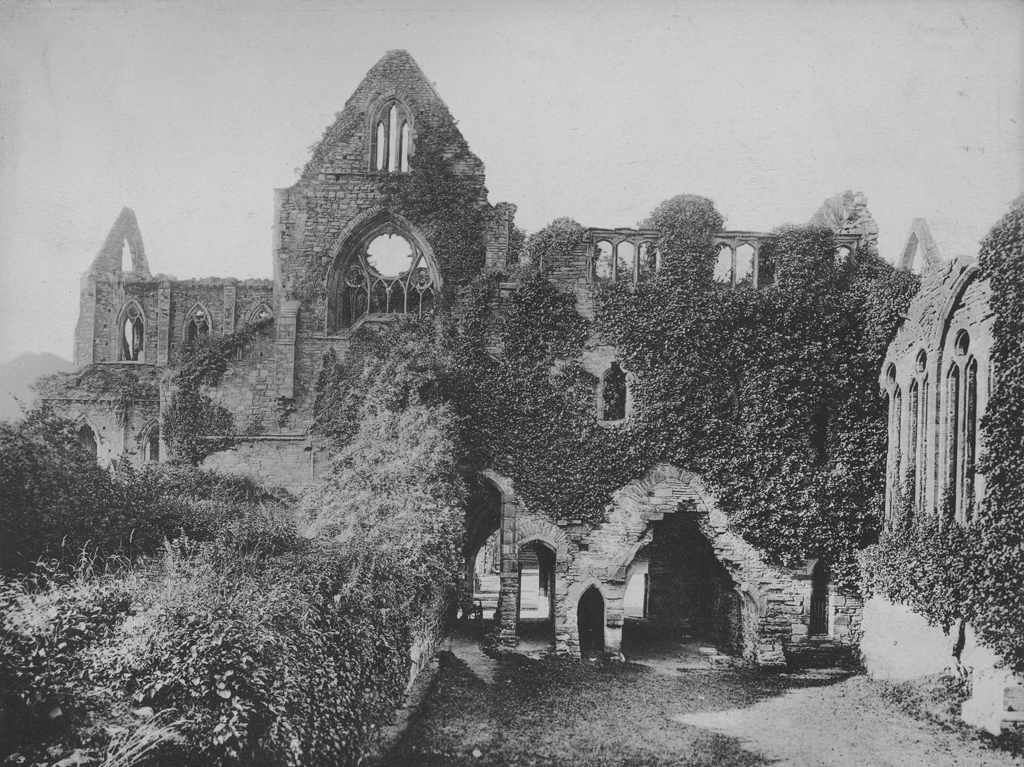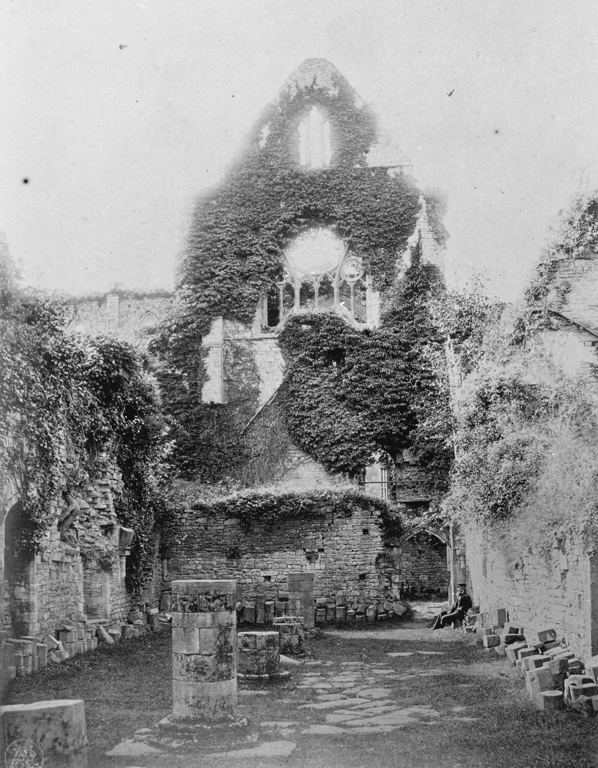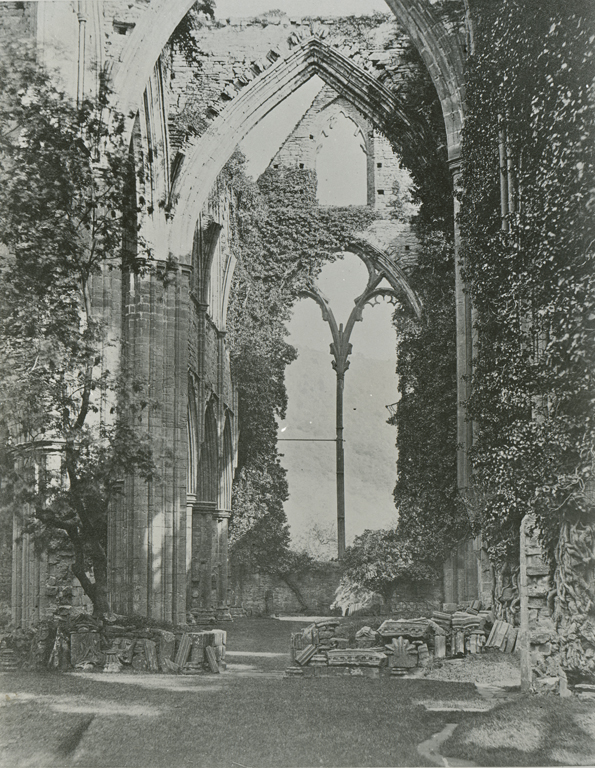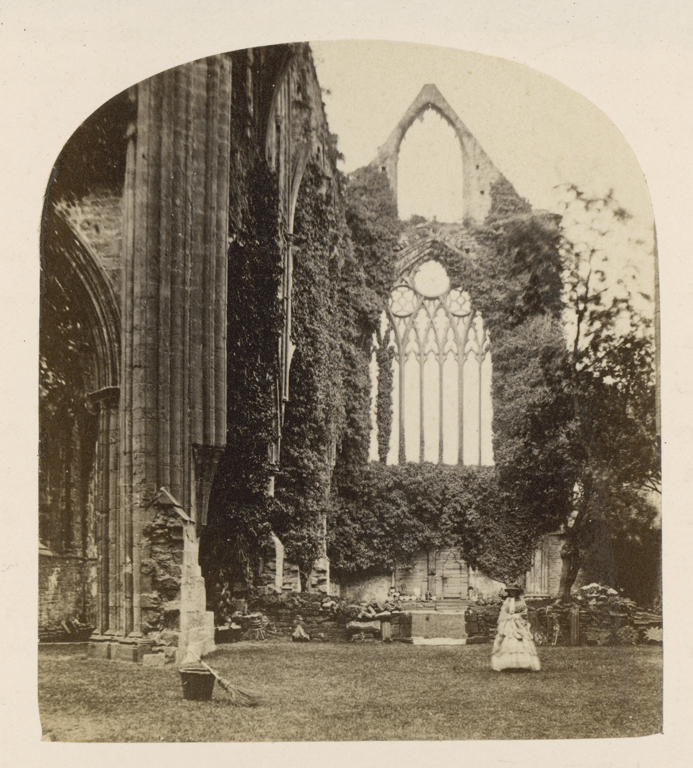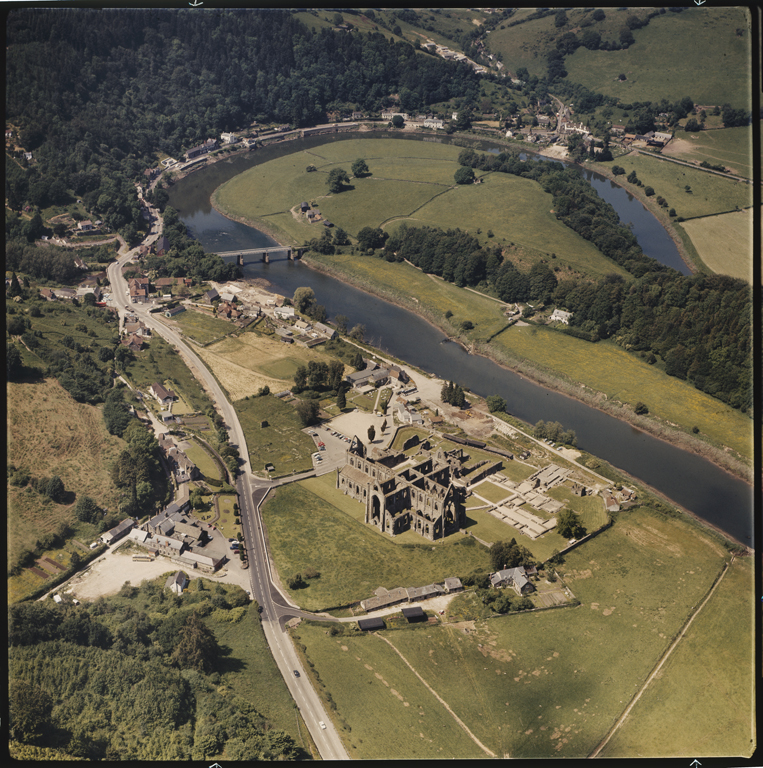Tintern Abbey - Overview
Tintern Abbey was the first Cistercian monastery established in Wales. It was founded in 1131 by Walter fitzRichard of Clare and first colonised by a group of monks from their mother house l’Aumone in France. With the growth of the community, the monastic buildings were enlarged, and in 1269 the construction of the Gothic church began, whose ruins can still be viewed today.
The land around the monastery was divided into granges and farmed by lay brothers. After the Black Death swept through the country in the fourteenth century, decimating the monks and the local population alike, the land had to be tenanted out. During the Glyndŵr Rising, 1400-15, many of the abbey’s possessions were destroyed by the rebels, which contributed to the monastery’s continued financial struggle. Abbot Wyche surrendered the abbey and monastery following the First Suppression Act in 1536 in which King Henry VIII demanded the dissolution of the monasteries. The buildings were stripped of their valuable roof lead and subsequently decay set in. Over the next two hundred years, the site was inhabited by the cottages and workshops of impoverished locals and workers from the nearby wire works.
By the late eighteenth century, it had become fashionable to visit the valleys and mountain uplands of Wales and inspect the country’s medieval ruins. The Duke of Beaufort, then the owner of Tintern, cleared the grounds to make them more accessible to tourists, but left the thick vines and ivy cover of the church untouched. Romantic poetry and landscape painting subsequently turned Tintern Abbey into the perfect example of a medieval ruin situated in a picturesque landscape.
In 1901, the Crown bought the ruins as they had become regarded as a monument of national importance and, in turn, Ministry of Works took ownership in 1967. Tintern Abbey is now a Grade I listed building and scheduled ancient monument under the care of Cadw.
Click here to view the Virtual Reality Tour of Tintern Abbey
Accounts of Travel
England und Schottland im Jahre 1844, 1844
Carl Gustav Carus (1789 – 1869)
Endlich eine Wendung um einen Vorsprung des Berges, und da liegt das bedeutende Gebäude ohne Dach, die Mauern mit Epheu begrünt und mit hohen leeren, aber schön gothisch verzierten Fenstern vor uns! – Schon der Anblick der Giebel und Mauern dieser alten Tintern-Abtey wirkte bedeutend; – als aber der Schließer, erst wie wir dicht davor standen, die Kirchthür aufthat, daß nun mit einem male das ganze mächtige Kirchenschiff, mit dem großen reichen und ganz offenen Chorfenster am Ende, mit den im reinsten gothischen Styl gehaltnen Pfeilern und mit der hohen alles durchdringenden Epheu-Umschlingung, vor uns lag – der Fußboden statt sonstiger Teppiche mit dunklem Grün eines feinen kurzen Rasen überzogen – da wirkte diese Erscheinung in dem abklingenden Abendlichte zauberhaft und inningst – fast bis zu Tränen ergreifend! – Etwas so in dieser Art in sich Vollendetes, so durch und durch Poetisches war mir noch nie vorgekommen! – Dazu diese einsame Lage im stillen grünen Thale an dem nun klargewordnen Gebirgsflusse, die Stimmen der Waldvögel hereinklingend! – Es erfaßte mich ganz eigenthümlich! – Die Stimmung wurde immer tiefer und stiller, je weiter ich unter diesen Bögen und zwischen diesen Pfeilern wandelte. – Daß noch so viel von edler Architektur erhalten war um als ein Ganzes würdig zu wirken, daß aber diesem Mächtigen nun durch das noch mächtigere Walten allgemeinen freien Naturlebens das Siegel einer noch hohern Weihe aufgedrückt war – dieß allein erklärte mir eine so bedeutende Wirkung!
After a final turn around a outcrop of the hill, the famous, roofless building lies before us with its green, ivy-covered walls and the tall empty windows with their beautiful Gothic decorations! The sight of the gables and walls of the ancient Tintern Abbey was already of note; but when, as we stood right in front of it, the keeper of keys unlocked the church door and all at once before us in the fading evening light the entire mighty nave, the open choir window at the other end, the purely Gothic pillars and the tall, all-encompassing ivy cover (the ground covered by a fine dark green lawn in place of the usual carpet), the whole apparition looked magical, intimate and almost moved us to tears. I have never encountered such perfection, something so thoroughly poetic. All this was complemented by the lonely situation in a quiet green valley beside a now clear mountain stream and the voices of the forest birds drifting over! I was overcome most peculiarly! The mood became more and more intimate and quiet the longer I wandered below the arches and between the pillars. That so much of the noble architecture had been preserved so as to appear as a dignified whole, that its grandeur now received the seal of a higher blessing by the even more powerful rule of free nature – this alone explained to me such a meaningful impression.
Cartons aus der Reisemappe eines deutschen Touristen, 1836
Karl von Hailbronner (1788 – 1864)
Es sind die schönsten Ruinen Englands, und sie werden gleich einem Wallfahrtsort aus allen Theilen des Landes besucht. Die Umgebungen dieser fast ganz erhaltenen Kirche aus dem Anfange des zwölften Jahrhunderts, so wie der Weg zu ihr, sind von allen Seiten, man mag sich ihr von England oder Wales her nähern, als Einleitung und Vorbereitung zu diesem rührenden Verfall der schönsten Architektur zu betrachten. ...
Ich habe die schönsten Ruinen griechischer und römischer Tempel gesehen, aber niemals den Eindruck von ihrem Anblick erhalten, den dieses grandiose Ueberbleibsel gothischer Bauart auf mich hervorgebracht .... Der Eingang ist verschlossen, die ganze Umgebung dem Alterthum entsprechend angelegt. Rosen ziehen sich durch die dichten Epheuwände hinan, und verleihen dem Ganzen schon von außen ein unbeschreibliches Ansehen, wie frische Blumen auf dem Grabe eines geliebten Wesens. Heilige Schauer aber durchwehen die Brust beim Eintritt in das Dunkel dieser majestätischen Hallen. Das Dach fehlt ganz, allein die Wände, die hohen breiten Fenster mit den feinen, herrlich gearbeiteten Verzierungen, die prachtvollen Bögen und die wunderschönen Pfeiler der Kirche, die ganz in der edlen Form des römischen Kreuzes gehalten ist, bieten ein Bild, das in meiner Erinnerung von keiner Ruine an Rührung und Würde überboten wird. Als natürlicher belebender Contrast dieser Stätte des Todes und der Verwesung ist der ganze Boden mit jenem englischen grünen Teppiche belegt, den kein Land der Erde bis jetzt nachzuahmen vermochte, und auch das Innere der Wände ist bis hoch zu den Zinnen und über den dachentblößten dicken Mauern und in die tiefsten Fensternischen und Pfeilerbrüstungen mit dunkelschimmerndem Epheu bewachsen. Und wie wenn die Ruhe der heiligen Männer, die in diesen stillen Gotteshallen und tiefen Kreuzgängen in längst verblichenen Jahrhunderten wandelten und für das Seelenheil ihrer Mitmenschen und die Wissenschaften bis zu ihrem vorbestimmten nahen Grabe sich abmühten, nicht gestört werden dürfe, bewegen sich die Gruppen der Beschauer, die von allen Orten zu diesem schauerlichen Denksteine des memento mori pilgern, lautlos und andachtsvoll durch diese weiten, düstern, göttlichen Räume, und das Erscheinen und Verschwinden der Gäste, welche über die durch die freundliche Vorsorge des Besitzers bis zu den höchsten Spitzen führenden, mit schützenden Geländern versehenen Treppengänge sich hinwinden, verleiht diesem ganzen Bilde einen unaussprechlichen Zauber der Vermählung der reizendsten Gegenwart mit den Schauern der Verwesung. Als die scheidende Sonne über die Gebirge von Wallis ihre letzten glühenden Strahlen herabsandte, ergoß sich durch die hohen gothischen Fenster eine Beleuchtung, die über die auf den hohen Galerien vertheilten Gruppen schöner englischer Frauen einen Abglanz magischer Erscheinungen verbreitete. Und ein leise säuselnder Abendwind griff in die Saiten der auf höchster Spitze stehenden Aeolsharfe, und lange, schmerzliche, ewig nachtonende Klänge öffneten die Brust den tiefsten Gefühlen und der erhabensten Andacht, die, mehr als irdischer Gottesdienst, nur solche Sphärenmusik auf empfindungsfähige Seelen herabzaubern kann.
They are the most beautiful ruins in England and like a place of pilgrimage, they are visited from all parts of the county. The surroundings of this almost completely preserved church from the early twelfth century as well as the path leading to it, no matter whether from England or Wales, resemble an introduction to and preparation for viewing the poignant decay of the most beautiful architecture. ...
I have seen the most beautiful ruins of Greek and Roman temples, but never received the same impressions as those on beholding these grandiose remnants of Gothic architecture .... The entrance is locked, the entire surroundings created in accordance with antiquity. Roses creep up the dense walls of ivy and bestow the entire structure with such an indescribable appearance on the outside alone, like freshly-cut flowers on the grave of a dearly beloved creature. But on entering the darkness of these majestic halls, holy shivers animate the breast. The roof is missing entirely; only the walls, the tall and wide windows with their delicate, superbly worked ornaments, the wonderful pillars of the church which are entirely cut in the noble form of the Roman cross – they all create an image that is unsurpassed in emotion and dignity by any ruin I can remember. As natural, invigorating contrast to this site of death and decay, the entire ground is covered by such an English green carpet as no other country on earth has been able to imitate to this day; and even the interior masonry is covered up to the pinnacles and over the roofless, thick walls and into the deepest window recesses and parapets with darkly shimmering ivy. Holy men used to wander around these quiet, divine halls and deep cloisters during long gone centuries and toiled for the salvation of their fellow men and the sciences until their inevitable early graves. As if their rest may not be disturbed, groups of visitors from all over on pilgrimage to this unearthly monument of memento mori move silently and reverently through these spacious, dusky, spiritual chambers. Thanks to the friendly provision by the owner, stairways with protective handrails lead up to the highest points. The appearance and disappearance of visitors who glide along these stairs lends this image the indescribable magic of the marriage between the most attractive present with the chill of decay. As the departing sun cast his last glowing rays over the mountains of Wales, a light flowed through the tall Gothic windows that spread a reflection of magical appearance over the assemblies of beautiful English women who were scattered along the high galleries. And a quietly whispering evening breeze touched the chords of the Aeolian harp that was installed on the highest point. Long, sorrowful, eternally lingering sounds opened the breast to the innermost emotions and the most sublime devotions which, better than earthly worship, only such music of the spheres can conjure into sentient souls.
Voyage d’un Français en Angleterre pendant les années 1810 et 1811, 1810
Louis Simond (1767 – 1831)
L’intérieur de l’abbaye de Tintern, autre ruine sur le Wye, est d’un grand effet; le toit de l’église a disparu, mais les groupes de colonnes gothiques, hautes et légères, et une partie des voûtes restent sur pied, ainsi que les murs et les belles fenêtres ouvragées en pierre. Le temps a nivelé les décombres, et les a recouverts d’une belle pelouse verte et unie, dont la teinte jeune et fraîche fait ressortir la sombre grandeur du squelette gothique, et de sa chevelure de lierre, qui pend en masses épaisses des points les plus élevés. Je joins ici deux vues de ces ruines. A tout prendre, les beautés du Wye ne répondent pas tout-à-fait aux descriptions de Gilpin et des autres voyageurs.
The exterior of Tintern Abbey disappointed us; but the coup-d’œil of the interior is wonderful. Suppose Westminster Abbey, with the roof off, – the pavement transformed into a short green turf, over which clusters of pillars, like Gothic skeletons, rear their slender forms; dark ivy in matted locks hanging from their high bushy heads. The walls, and part of the arches over the aisles are still entire; even the delicate tracery-work of the large windows; and, as we were told, the painted glass adhered to them till within a few years. I took some views of these ruins. Upon the whole the beauties of the Wye itself fall rather short of the descriptions of Gilpin and other travellers.
(Journal of a Tour and Residence in Great Britain, during the Years 1810 to 1811, by a French Traveller: with Remarks on the Country, Its Arts, Literature, and Politics, and on the Manners and Customs of Its Inhabitants. Edinburgh: Printed by George Ramsay and Co., for Archibald Constable and Co, 1815)
"L’Angleterre et la vie anglaise: XXVI. Le sud du Pays de Galles et l’industrie du fer. Carmarthen, les eisteddfodau et les Iron-Works de Merthyr Tydfil", c. 1850s
Alphonse Esquiros (1812 – 1876)
[L]a célèbre abbaye de Tintern* a été saisie en quelque sorte dans sa vieillesse par les forces toujours jeunes d’une végétation envahissante qui lui ont donné comme une seconde vie. Les herbes, la mousse, les arbustes, les fleurs sauvages semblent avoir pris à cœur de remplir les vides de l’architecture; des plantes grimpantes balancées par le vent pendent le long des belles fenêtres aux fines nervures de pierre et les consolent des vitraux détruits. Au moment où je visitai cette vieille église monastique, un sorbier chargé de fruits rouges comme des grains de corail étalait joyeusement ses branches sur une partie de l’aile gauche, depuis longtemps écroulée; la voûte du ciel servait de toit à l’édifice, entièrement découvert, et une bande d’oiseaux chantaient vêpres dans les arceaux délabrés qui avaient du moins conservé la beauté des lignes ....
*Cette abbaye fut fondée en 1131 par Walter-Fitz-Richard de Clare pour des moines de l’ordre de Cîteau. Les voyageurs trouvent dans le gardien de ce curieux édifice un guide intelligent et éclairé. Pour lui, ce n’est point une ruine, c’est un ami.
The famous Tintern Abbey* has been somehow seized in its old age by the ever young force of invasive vegetation that has given it a new lease of life. Grass, moss, bushes, and wildflowers have taken it upon themselves to fill in the blanks in the architecture; climbing plants swaying in the wind hang down the sides of beautiful windows with fine stone mullions, as if making up for the destroyed stained glass. At the time of my visit to this ancient monastic church a service tree laden with red fruit like grains of coral was joyfully deploying its branches across part of the left wing, long since crumbled. The vault of heaven served as roof to the building, completely open to the elements, and a group of birds sang vespers among the dilapidated arches which retained the beauty of the lines.
*This Abbey was founded in 1131 by Walter-Fitz-Richard de Clare, for the monks of the Cîteaux order. Travellers will find in the caretaker of this curious building an intelligent and enlightened guide. To him it is less a ruin than a friend.
